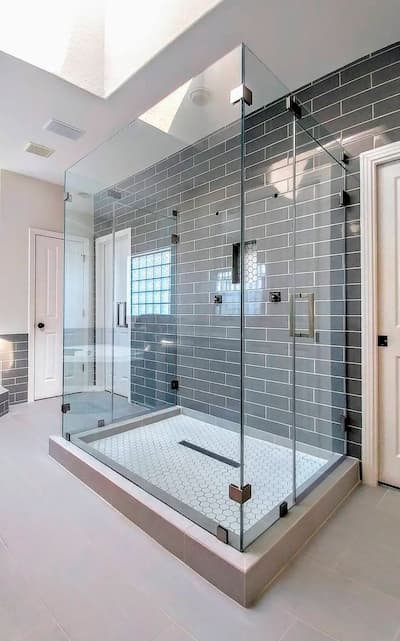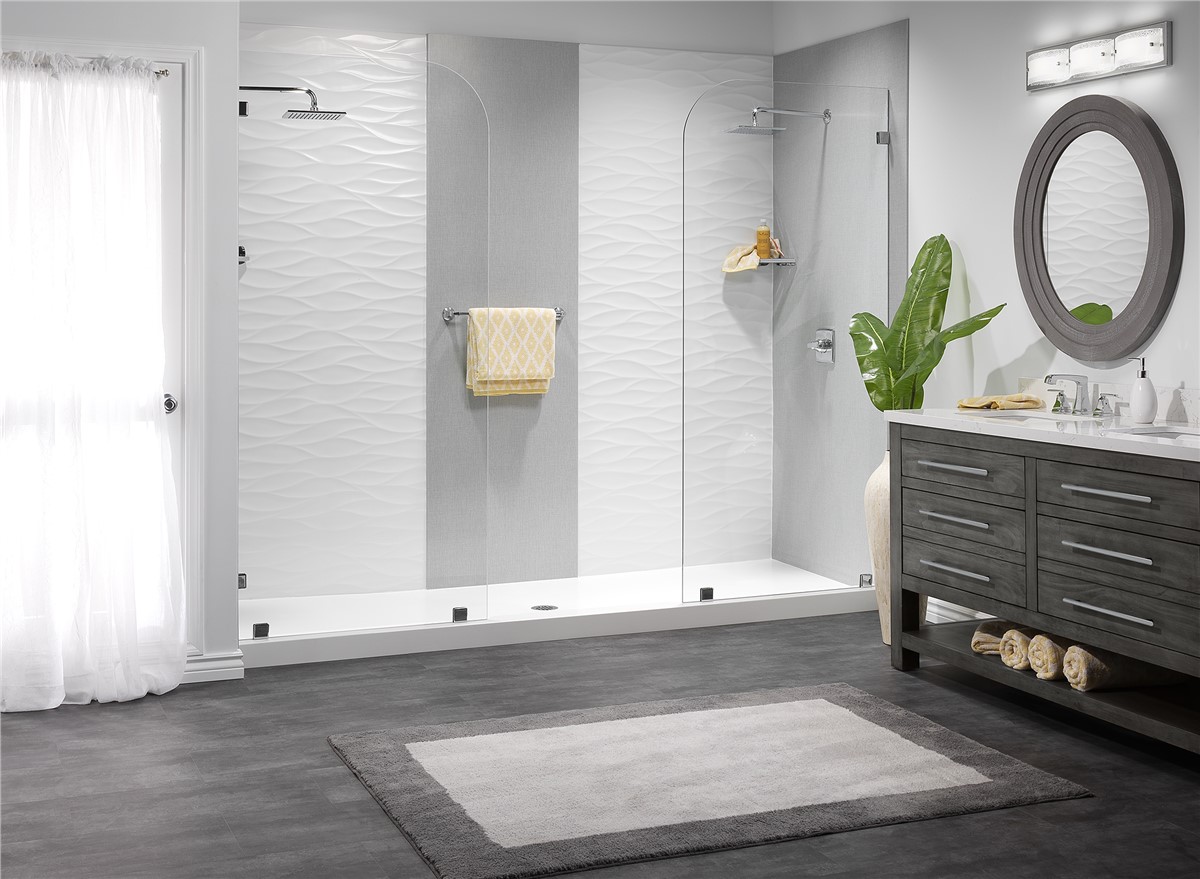Do you find yourself in search of information and facts about How to Install a Freestand?

An effective shower installment calls for mindful preparation and a great deal of job. For the most part, you will require to do three types of tasks: framing walls, setting up the plumbing, as well as completing walls.
Various Kinds Of Shower Units
- Push-on Mixer: The hose pipe and also spray parts of the push-on mixer shower system can be linked to the bath faucet as per your requirement, and the water temperature level can be readjusted via the taps. Push-on mixers are cheap and also extremely straightforward to mount. However, although the hose pipe connection is straightforward, it is easily removed. Additionally, it is troublesome to adjust the temperature.
- Bath/Shower Mixer: The hose pipe and also spray of this sort of shower are combined with a bathroom mixer faucet, and the temperature can be readjusted via the bathroom faucets. It is an extremely inexpensive choice as well as no added plumbing is entailed. Nevertheless, the bath/shower mixers additionally experience inconvenient temperature level control choices.
- Manual Mixer: The pipe as well as spray of a manual mixer shower unit are a part of the wall surface system and also the hot and cold water products are connected to a single shutoff The temperature level and stress of the water are managed with either one or a selection of knobs (in more costly showers). Although temperature control is much easier in hand-operated mixer kinds, they are extra expensive than the previously pointed out mixers. They likewise call for added plumbing of cold and hot water system pipes.
- Thermostatic Mixer: The pipe as well as spray of this shower type are a part of the wall system and the cold and hot water products are linked to a solitary valve right here too. It is complete with an integrated stabiliser to self-adjust the water temperature level and also to prevent it from coming to be too hot. One of the greatest benefits of a thermostatic mixer shower type consists of convenient temperature level control. Nonetheless, it is one of the most costly of the various mixer alternatives.
- Power Shower: A power shower is a single device having an effective electrical pump that is capable of altering both the water pressure and also temperature. This type of shower can be fitted if there is water from a cold water cistern and a warm water cylinder. A power shower makes the change of both stress and temperature level simple. On the other hand, it disagrees for water heated directly by the shower or where the water is provided by a mix central heating boiler under keys pressure.
- Electric Shower: An electrical shower is plumbed right into a mains cold water supply and also it warms the water electrically. It is important to keep in mind that for this shower type to be installed, the mains stress needs to be at the very least 0.7 kg/sq centimeters (10lb/sq in). The unit enables the temperature as well as pressure to be readjusted using a knob. Designs with temperature stabilisers are better as they remain unaffected by other taps somewhere else being used within the household. A significant disadvantage of electrical showers is that the control handle only allows for the alternative of heats at less stress, or lower temperatures at a higher pressure. This is bothersome in the winter season when the spray is often weak as well as the mains water is chillier. However, this issue is dealt with in some designs which are available with a winter/summer setting.
A Lot Of Common Mistakes
- Violating or overlooking local code constraints.
- Utilizing pipes that are too little.
- Attaching copper to galvanized without using a brass or dielectric fitting in between the two.
- Not utilizing tape or pipe substance at threaded joints.
- Not leveling your components when mounting them.
- Not mounting an air void loading for fixtures.
- Cutting supply stub outs too brief to mount the shutoff valves onto after the finished wall surface remains in location.
- Not appropriately straightening tubes right into installations or quit valves. (Compeling the nut onto the compression ring at an angle when the tubing is at an angle will cause a leakage.).
- When transforming the water back on in your home, constantly run the outside tube valve or purge your bathrooms to bleed dirt and also air from the lines. This particles can cause issues in your sink faucets and other plumbing trim.
Preparation.
Firstly, you should decide on the sort of shower that you want to set up. It is very important to determine whether the chosen shower is capable of dealing with certain systems and also can control a safe level of water with the boiler. A lot of shower devices nowadays are designed to be flexible to different water pressures (such as stored hot water and also cold mains).
It is additionally crucial to take into account the water stress as well as the planning of the piping and drain for the shower.
Technique.
Depending upon the kind of shower you want to set up, the shower head need to either be fitted in order to avoid its contact with the water in the bathroom listed below or the base tray, or it has to have a check shutoff.
Before starting, it is a good idea to note the settings of the shower head and control, and also to intend the pipe-work included. Furthermore, the drainage system to remove the drainage will need to be planned. Both positions of the cord route as well as the shower switch will certainly also require to be considered if an instantaneous or electric shower system is being mounted.
Use the instruction overview provided with the shower unit to fit the shower control.Before suitable the pipelines that will provide the water to the shower system, it is important to cut off the water. In order to protect the pipes, they ought to be provided a waterproof covering and likewise fitted with isolating shutoffs. The pipes can then be hidden right into the wall as well as smudged over to neaten the overall look.
Fit the base tray, shower head, as well as fittings.
Attach the major shower control to the pipes that will be supplying the water (This might call for a female screw string adapter).
Reconnect the water and examination the pipes for any leakages, as some might require firm.
If you are mounting an electric shower, remember to turn off the electrical power supply before making any electric connections. When these connections have actually been made (there need to be advice within the instruction manual), the power supply can be changed back on.
Adjusting Water Pressure to Match Your Shower.
The cold water tank can be lifted to a better height (sometimes as low as 150mm (6inches)) by fitting a solid wooden assistance below it - perhaps made up of struts and blockboards. If you choose this choice, the primary as well as distribution pipelines will certainly also have to be raised to meet the new height of the reservoir.
Alternatively, a booster pump (a solitary pump or a dual/twin pump) can be fitted. Whichever type is chosen, it must be connected into the power supply in order to operate.
Piping and Drainage.
It is best to use 15mm size supply pipes, and make the go to the shower as brief and straight as possible so as to maintain maximum pressure and also reduce warmth loss. Furthermore, by minimising making use of joints for pipeline corners, you can decrease the resistance in the flow of the water. You can achieve this by bending the pipes rather.
How Do You Install a Shower? Follow This Guide
Installing a Shower at a Glance
- Tools & Materials: Level, electric drill, caulk, hole saw, cedar shims, shower unit
- Step 1: Drill pilot holes
- Step 2: Prep fixture holes
- Step 3: Move unit into place
- Step 4: Caulk corners and base
- Step 5: Attach door
- Step 6: Install shower pan
Whenever plumbing is involved in a DIY project, people worry about what might go wrong. The truth is that installing a shower isn’t that complicated, and you can save a lot of money by doing it yourself. You shouldn’t need to make any alterations to your plumbing to complete the job, and most of the tools you need will be provided in your new shower kit.
Can I Install a Shower Myself?
Even if you’ve never installed a shower before, you’ll find this to be a project that is perfectly suited for DIYers with a moderate level of experience. Whether you're doing a bathtub conversion or installing a new stall, most of what you need comes in shower kits that you can purchase from a hardware store. The first thing you need to do is determine what type of shower stall you want.
Single-panel stalls are the easiest to install because they come preassembled. All you need to do is put them in place. Multi-panel showers require a few additional steps, but you’ve got more control over the appearance of your unit. Multi-panel units are also much easier to handle if you’re going to do the installation without any help.
Be sure to take all appropriate safety precautions, such as wearing eye protection and gloves. When you’re removing or installing a shower unit, you might kick up debris that could hurt your eyes. You’ll also need to work with equipment that will get extremely hot, so be sure to have safety gloves handy.
Tools and Materials
- 2- to 4-foot level
- Electric drill with a 1/8-inch drill bit
- Caulk
- 2-inch hole saw
- Cedar shims
- The unit itself
Before You Begin: Prep the Space
It’s highly important to measure your space accurately before putting the stall in. Measuring from the floor upward and from each corner outward will ensure you’ve got the right measurements. What you’re looking for is where the plumbing apparatuses are going to come through the stall. Transfer these measurements over to the back of your unit by drawing the locations of these holes using a pencil or marker.
Pull out your old shower and make sure to scrape off all the old caulking. Be thorough because you want to work with smooth surfaces for the best installation. Once you’ve pulled out your existing shower, you need to make sure that the floor is clean and dry. The best way to clean debris is with a shop vacuum, as it’ll soak up water and dirt together.
If you’re experiencing any plumbing issues, such as low water pressure, this is a perfect opportunity to solve them. Make sure that the pipes themselves are not in need of patching and clean your showerhead. When you turn the water back on after your project, check the pipes for signs of wear or disrepair. Anything beyond minor repairs should be handled by a plumber, and this is the best time to bring in a professional.
If the floor has any moisture at all, don’t proceed until it’s completely dry. The last thing you need is for the floor to rot or invite mold and mildew into your base. Once everything is dry, apply waterproof wallboard to the walls. This can be attached with screws or nails, then sealed with caulk so that water doesn’t seep into any crevices.

I am just very serious about How to Build a Shower Enclosure for Your DIY Bathroom and I really hope you enjoyed the entire post. Don't hesitate to take a moment to distribute this blog post if you enjoyed it. I treasure reading our article about How to Install a Direct-to-Stud Shower Enclosure.
Schedule Service
Comments on “First-timer's Guide to Installing a New Shower Unit”